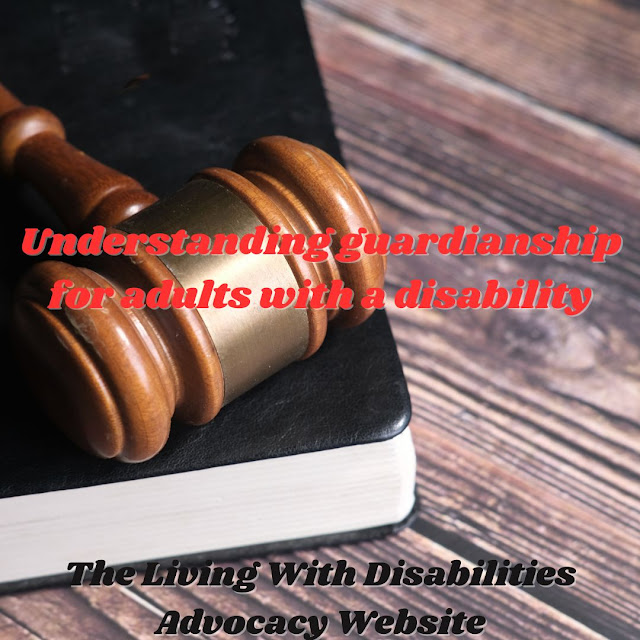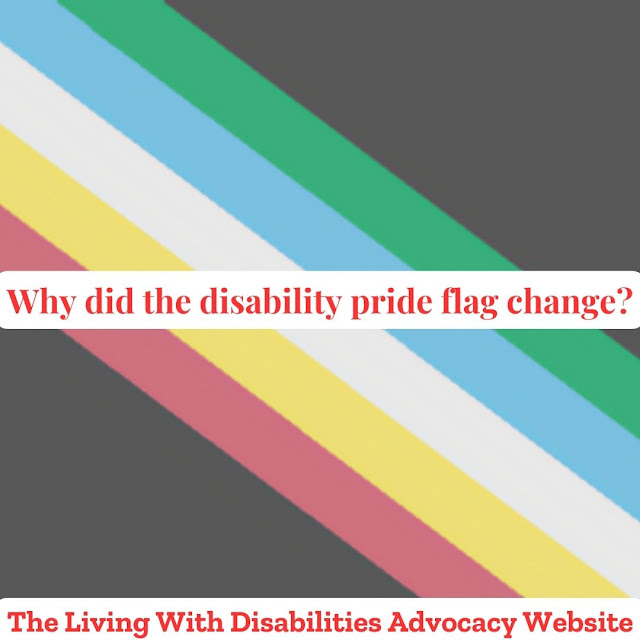Navigating between two communities
Hello everyone, I'm Katrina from Living with Disabilities. You're tuned into the Living with Disabilities, advocacy website dedicated to helping people comprehend the disabled community. The core purpose of our website is to assist society in recognizing the full range of various disabilities and conditions. Accessibility is a key component of this understanding. Without accessibility, there's exclusion. This week, we'll discuss "Navigating between two communities" Let's push 'Dis' aside and focus on the 'Ability' of Living with Disabilities.
This topic may prompt diverse opinions, which is perfectly acceptable. You're encouraged to share your thoughts respectfully in the comments. As the discussion shifts to Living with Disabilities, if you do not have a disability, try to empathize by imagining life from the perspective of someone who does. Endeavor to understand the mental state and challenges faced by a person with a disability. Ableist behavior is unacceptable here; this space is for education, not for the dissemination of mental and physical health misinformation.
Let's clarify the meaning of navigating between two communities to help others better understand. Many will either dismantle it as if it were string cheese or stumble over it like untied shoelaces. This behavior often stems from misunderstanding or ableism. If the issue is a lack of understanding, seeking comprehension is key to avoiding ableist attitudes.
When considering the concept of 'Community,' and even more so 'Society,' it's important to acknowledge the numerous factors involved. As you approach the topic of 'Society' within the context of Living with Disabilities, it's beneficial to jot down any negative thoughts that arise and seal them in a jar, to never revisit them. It's understood that some may become agitated by this concept, which is why writing things down can be beneficial in such instances, as no one should be subjected to toxicity. However, it is beneficial to express and relieve oneself of burdensome thoughts and feelings. In this instance, Living with Disabilities strongly advises consulting a professional counselor who specializes in disabilities.
What is the distinction between society and the disability community? The distinction between society and the disability community lies in the perspectives and interactions regarding disability. Society often views disability through a medical model, focusing on individual disability and treatments, whereas the disability community embraces a social model that values diverse bodies and minds, advocating for inclusive environments and policies. Can you see why people with disabilities or conditions use the term "society" when they express themselves? People with disabilities or conditions often use the term "society" to reflect on their place within the broader community and the social constructs that influence their treatment and inclusion. This term encompasses the collective attitudes, structures, and institutions that shape their experiences and opportunities.
How can individuals with disabilities or medical conditions navigate between different communities? Individuals with disabilities or medical conditions can navigate between different communities by utilizing inclusive policies and practices that are in place within these communities. This includes participating in everyday activities and roles similar to their peers without disabilities, using public resources such as transportation and libraries, and accessing health care. Inclusion strategies may involve identifying and eliminating barriers to participation, making healthy living easier for all people across various community sectors.
Having explored the distinctions between society and the disability community, as well as how individuals with disabilities can navigate among various communities, let's shift our focus to how people without disabilities can become more accommodating to those with disabilities or conditions. This topic has been addressed in numerous episodes and articles. Let's explore some techniques here and engage in profound mental conditioning, akin to using a clarifying shampoo and conditioner.
1. If financial constraints are significant to the extent that you're unable to make adjustments due to your living situation, such as renting, it can be challenging. Seek a location that offers accommodation. Including people with disabilities in all activities is greatly appreciated.
2. If you are employed or collaborating, survey your surroundings to identify what is and isn't accessible. Compile a checklist and strive to enhance accessibility in the workplace, including the environment. Examples include ramps, accessible restrooms, automatic door openers, and braille signage, among others.
3. As a landlord of housing or apartment complexes, it is essential to provide your homes or apartment units with reasonable accommodations and modifications to ensure equal access for people with disabilities. To ensure you are making the appropriate accommodations and modifications, compile a checklist as outlined by Living with Disabilities in the section "If you are employed or collaborating". Your checklist for ADA compliance in housing and apartment units should include accessible entrances, public use areas, usable doors, pathways through covered dwellings, reachable light switches, thermostats, electrical outlets, wall reinforcements for grab bars, and accessible kitchens and bathrooms.
We will compile a list to give you a general idea.
* Widen doorways
* Ramps. Including an elevator. Having both is essential for mobility. When applying a ramp make sure that it fits the entranceway. Providing both a ramp and an elevator offers alternatives, ensuring that if the elevator is out of service, individuals who depend on mobility aids can still access their destination.
* An ADA-compliant bathroom requires a 60-inch width and a 56-inch depth, including clearance spaces, according to The Home Depot standards.
* Scheduling Rent payments should be met when a person with a disability receives income assistance.
* Service and Emotional Support Animals should be made available to individuals who are blind, those with a history of seizures, and people with various other invisible or physical disabilities.
* Housing options that allow for a live-in assistant can provide essential aid and care.
Landlords are legally required to offer lodging unless doing so would put them in an unreasonable financial difficulty. Prior to leasing or renting out a home, landlords should assess potential tenants' needs regarding accessibility.
The host of Living with Disabilities, Katrina, was inspired by the daytime show The View to create a podcast episode discussing various disability-related topics.
Living with Disabilities is currently looking for disability rights activists or advocates to speak on various disability-related topics. For The Advocacy Table.
The Advocacy Table's concept revolves around pressing monthly topics within the disability community. It focuses on current issues that require attention and explores how individuals with disabilities can address these concerns.
How can you become a panelist?
Follow us on all our social media, including Facebook and Instagram, where we will post about the topic of discussion and look for panelists. A deadline will be given, along with information on what is needed from you. After everything is done, a Zoom link will be created with a date and time. Once we receive all panelist information, the Zoom link will be emailed or messaged to you through your social media accounts. We do ask that if anything does come up and you can't make it on the show, do reach out to the host so she knows, and if any panelists have contacted Living with Disabilities through social media, even the host, about making an appearance on the show, they will receive a Zoom link to be on the show. We want to keep it at five or ten panelists. The link will go out a week before the show is scheduled, and after the show is over you will receive a survey to fill out.
Let's Advocate to push "Dis" aside and focus more on the "Ability" here at Living with Disabilities.
If you need online support, Disability Safe Haven is great for receiving support. The We Care Team is very protective of its members and asks everyone who joins, to have a profile picture and answer the security questions.
Another online support, Living With Cerebral Palsy, is great for people with cerebral palsy and for family and friends who want to learn more about different types of cerebral palsy and how to support their loved ones who have it. This group has open and closing hours and a 24/7 chatroom. Open and closing hours are based on United States time zones.
If you are looking for a Virtual socializing group, a group filled with creative activities, and a space where you build on friendship. United By Creative Minds, is a space for people with disabilities only! Must have a profile picture and answer the security questions. If you're interested in joining, contact Living with Disabilities and mention "Unite Me" in the subject title; the host will then add you to the group. This is a private group on Facebook, created specifically by and for individuals with disabilities.




Comments
Post a Comment